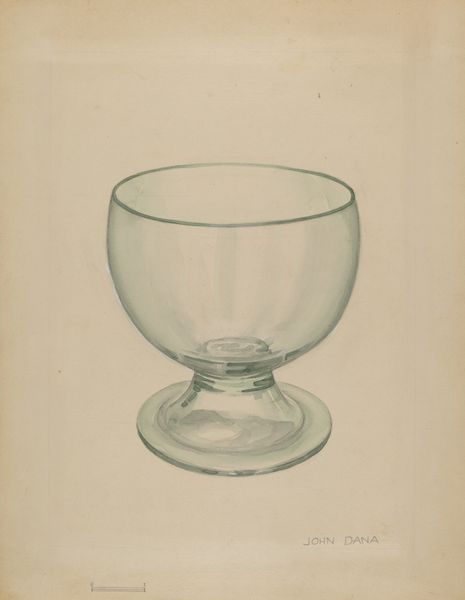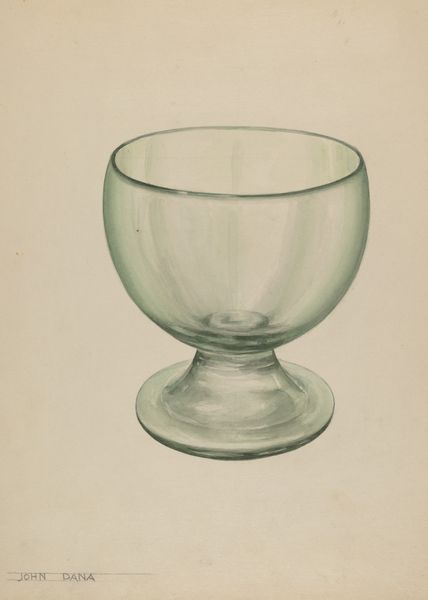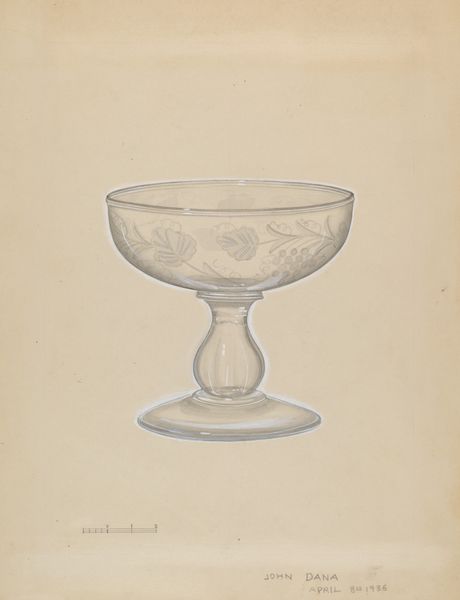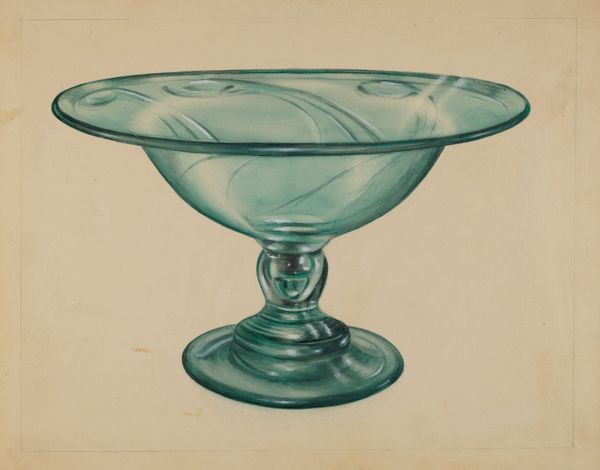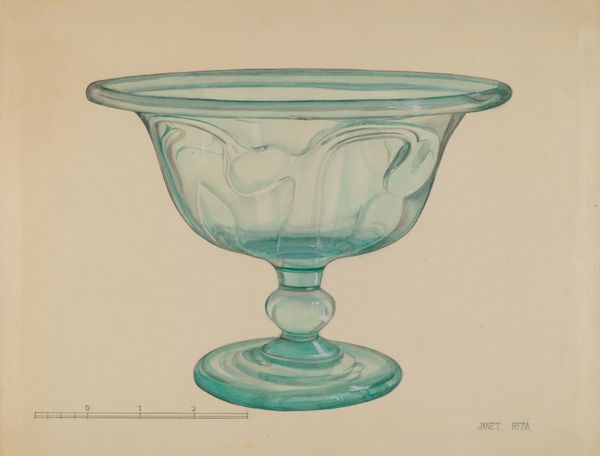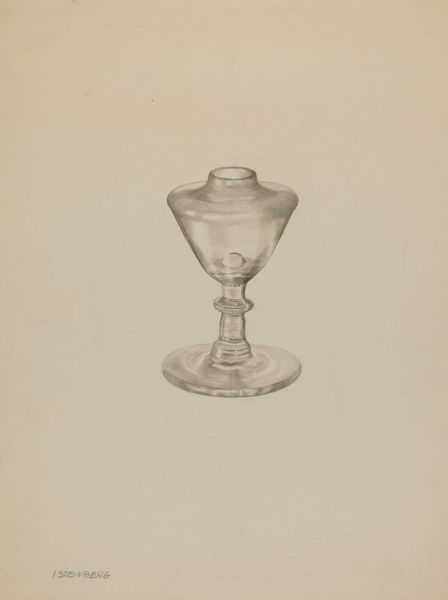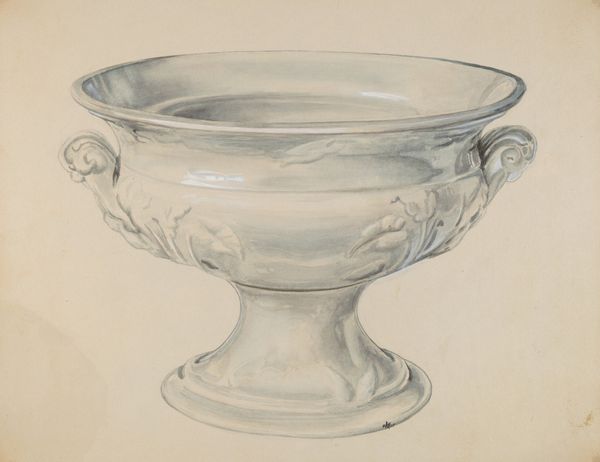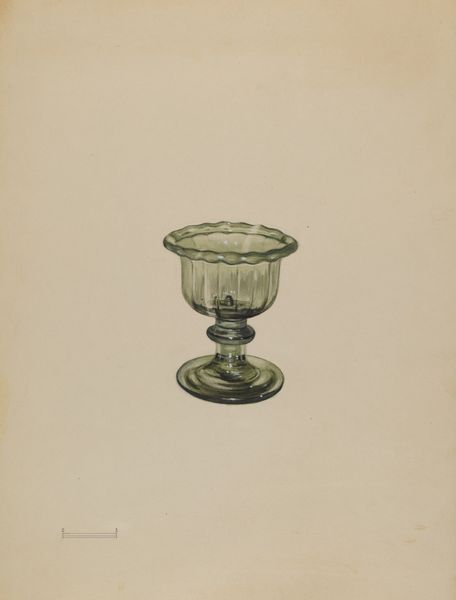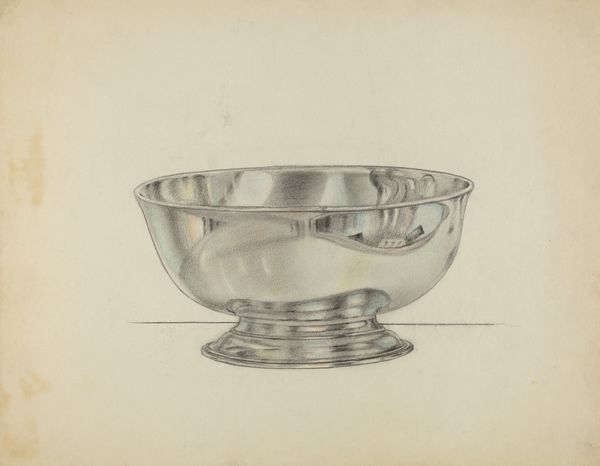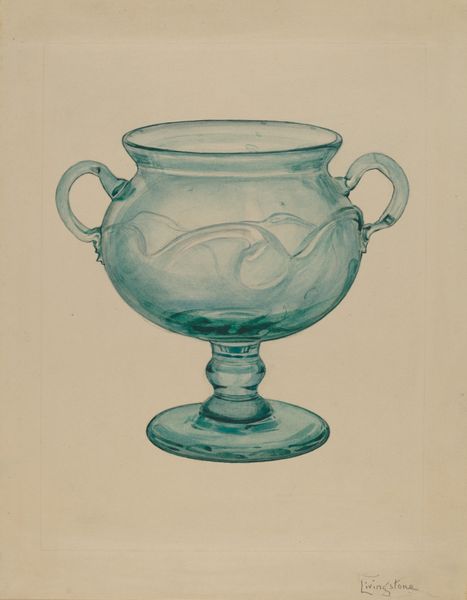
drawing, ceramic
#
drawing
#
ceramic
#
charcoal drawing
#
ceramic
#
realism
Dimensions: overall: 30.2 x 22.2 cm (11 7/8 x 8 3/4 in.)
Copyright: National Gallery of Art: CC0 1.0
Curator: Gazing upon this drawing, I’m immediately struck by a profound sense of tranquility. It's quiet, still. There’s a simple elegance in the rendering. It evokes the feeling of morning light filtering through a window. Editor: You're spot on about that quiet elegance. This artwork is titled "Compote" and we attribute it to John Tarantino from around 1940. It looks like it's created using drawing and ceramic mediums. Curator: 1940...yes, there’s a hint of a pre-war gentility here, isn't there? Something almost... nostalgic. The glass itself looks almost fragile. As if the slightest tremor could shatter the calm. You almost forget, because it is a mere drawing, but these types of objects once stood as hallmarks of domestic life. Editor: Absolutely, and considering the social climate of the 1940s, perhaps that fragility isn't accidental. These everyday objects—domestic stability in visual form—offered a silent counterpoint to the disruptions of war. Think about the materials too: ceramic, fragile, breakable but also...collectable. They reflect a deep sense of ownership. What's striking to me, though, is its accessibility. It invites viewers from all social standings, since this could've stood at almost anyone's home. Curator: You've nailed it – collectability! A compote dish signifies plenty, abundance, and display. Display for guests and household members as well. Maybe it speaks to some longing for something secure, even perfect. I like how Tarantino's choice of representing it almost exclusively with light, emphasizes that longing and delicacy. It's not just about seeing a compote; it’s about *sensing* one. The textures practically resonate. It creates an imaginary aura. Editor: Agreed, the textural sensitivity is beautiful, though, on a socio-political note: who do you imagine being the audience for art that celebrates a perfect life during this historical moment? Perhaps not refugees nor migrants displaced by the war, but perhaps an aspirational upper class? Curator: An excellent point, that nuance, I must admit, passed right over me. However, for those listening along and wondering how to create the perfect drawing using similar concepts as Tarantino did, my biggest advice would be to just feel the aura and run with it! Allow your own imagination to do most of the labor. Editor: So true. Looking closely teaches you much more about this compote’s context. Art is never truly separate from the forces around its creation.
Comments
No comments
Be the first to comment and join the conversation on the ultimate creative platform.
